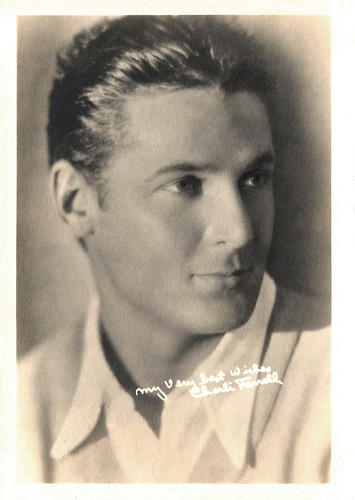
Vintage photo card. Written caption: My very best wishes, Charli Farrell.
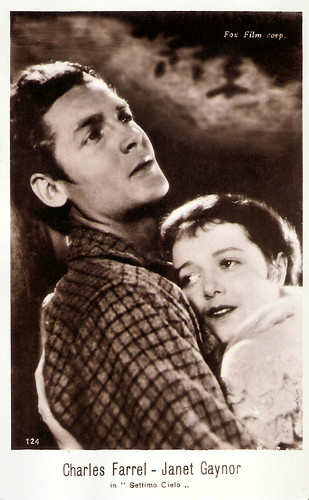
Italian postcard offered by Cioccolata Lurati, no. 124. Photo: Fox. Publicity still for Seventh Heaven (Frank Borzage, 1927) with Janet Gaynor.
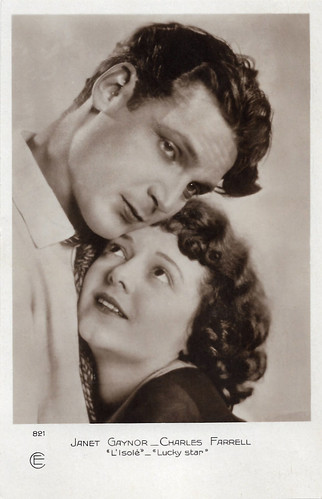
French postcard by Cinémagazine Edition (CE), Paris, no. 821. Photo: Fox. Publicity still for Lucky Star (Frank Borzage, 1929) with Janet Gaynor.
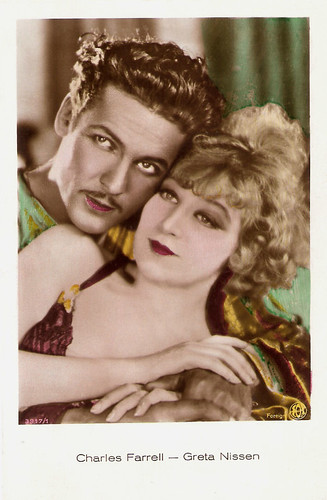
British postcard by Ross Verlag, no. 3917/1, 1928-1929. Photo: Fox. Publicity still for Fazil (Howard Hawks, 1928) with Greta Nissen.
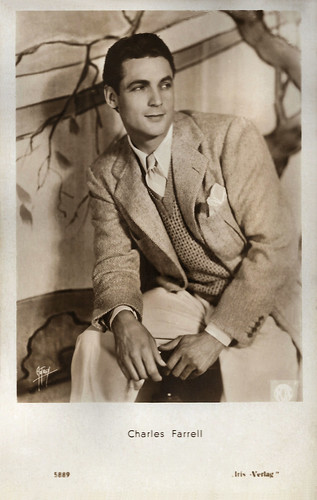
Austrian postcard by Iris-Verlag, no. 5889. Photo: Max Munn Autrey / Fox.

Austrian postcard by Iris-Verlag, no. 5996. Photo: Max Munn Autrey / Fox.
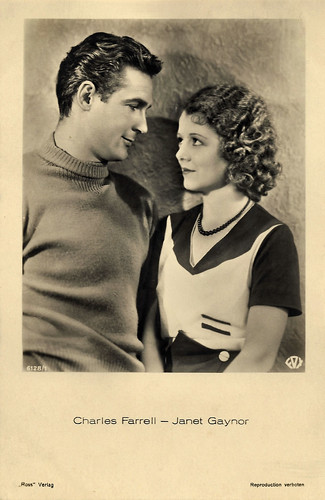
German postcard by Ross Verlag, no. 6128/1, 1931-1932. Photo: Fox. Publicity still for The First Year (William K. Howard, 1932) with Janet Gaynor.
The pivotal role of the Parisian sewer cleaner Chico
Charles David Farrell was born in 1900 in Onset, Massachusetts, the only son in his family. His father owned a lunch counter where films were shown on the upper floor which introduced Farrell to the world of cinema.
He briefly attended Boston University to study business while playing in the football team but dropped out to become an actor in the theatre. This didn’t go well with his family, especially his father, so Farrell was on his own. He took any acting job possible that would get him financially and professionally closer to his goal of being in the cinema.
The handsome young actor decided to move to California and try his luck in Hollywood. For Paramount Pictures, Farrell did extra work for films ranging from The Hunchback of Notre Dame (Wallace Worsley, 1923) with Lon Chaney, Cecil B. DeMille's The Ten Commandments (1923), and The Cheat (George Fitzmaurice, 1923) with Pola Negri.
Farrell continued to work throughout the next few years in relatively minor roles without much success. After three years as an extra, he was given a good role in Old Ironsides (James Cruze, 1926). Then his big break came when Fox Studios signed him and gave him the pivotal role as the Parisian sewer cleaner Chico in the romantic drama 7th Heaven (Frank Borzage, 1927). He was paired with fellow newcomer Janet Gaynor. The film was a public and critical success and won an Academy Award.
The studio noticed the audience growing a craze for Farrell and Gaynor and they would go on to co-star in more than a dozen films throughout the late 1920s and into the talkie era of the early 1930s. The plots of the Gaynor-Farrell films were fit for a fairytale book where love conquers all and the good prevails, with convincing acting that makes you believe it.
The director of three of these films was Frank Borzage, known for stories set in a surreal or ethereal-like world. Farrell and Gaynor were romantically involved from about 1926 until her first marriage in 1929. Shaken by the death of his close friend, actor Fred Thomson, Farrell proposed marriage to Gaynor around 1928, but the couple was never married.
Years later, Gaynor explained her breakup with Farrell: "I think we loved each other more than we were 'in love.' He played polo, he went to the Hearst Ranch for wild weekends with Marion Davies, he got around to the parties - he was a big, brawny, outdoors type... I was not a party girl... Charlie pressed me to marry him, but we had too many differences. In my era, you didn't live together. It just wasn't done. So I married a San Francisco businessman, Lydell Peck, just to get away from Charlie."
Another success for Farrell was The Red Dance (Raoul Walsh, 1928) in which Dolores del Rio co-starred as a poor girl-turned-dancer who falls in love with Farrell’s character of Grand Duke Eugene during the Bolshevik Revolution. Two months before the stock market crash, Farrell and Gaynor starred in the unique and heartfelt WWI love story, Lucky Star (Frank Borzage, 1929).
The Depression was just beginning when Farrell made his last and one of his best silents film, City Girl (F.W. Murnau, 1930). He plays Lem, a young man from the country sent to the city for a business who falls in love with the waitress at the lunch counter named Kate (Mary Duncan). Rachel at Vintage Stardust: "His acting brought elegance even during the most emotional scenes and refreshed the image of masculinity in the film even after he successfully transitioned into sound. Oh and he was one of the first to go nude in a film (in The River from 1929 (sic) there’s a brief scene where he swam nude and is about to get out of the water completely before he sees a woman nearby.)" Sadly, Frank Borzage's masterpiece The River (1928) is partially lost.
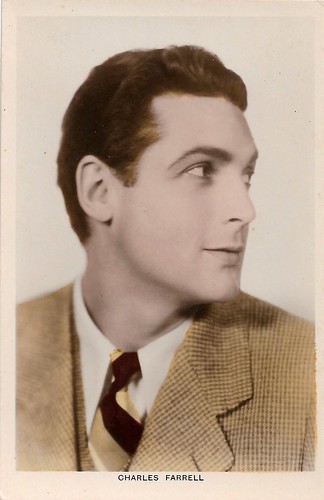
British postcard in the Colourgraph Series, London, no. C 65.

British card.

French postcard by J.R.P.R., Paris, no. 207. Photo: Fox.
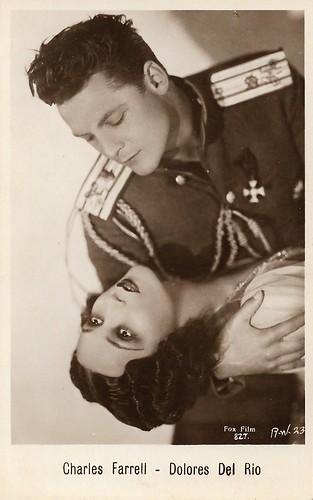
Italian postcard by G.B. Falci, Milano, no. 827. Photo: Max Munn Autrey / Fox Film. Publicity still for The Red Dance (Raoul Walsh, 1928) with Dolores del Rio.
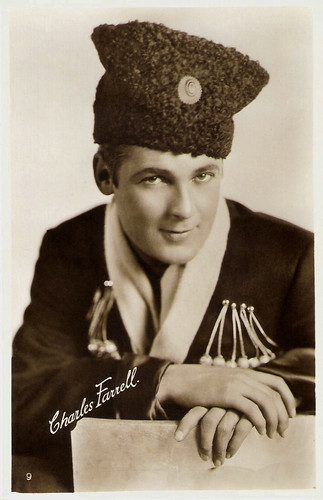
British postcard, no. 9 of a fifth series of 25 Cinema Stars, issued with Sarony Cigarettes. Photo: publicity still for The Red Dance (Raoul Walsh, 1928).
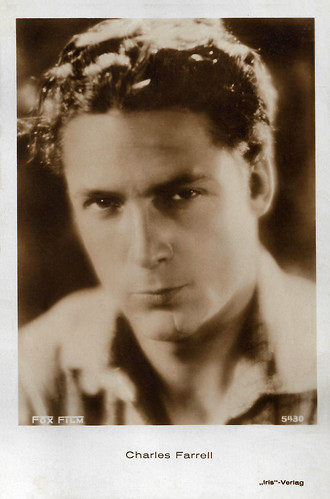
Austrian postcard by Iris-Verlag, no. 5430. Photo: Fox.
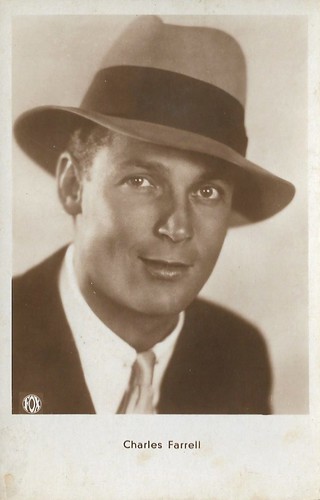
Austrian postcard by Iris Verlag, no. 5995. Photo: Fox.
Bringing a new definition of men into cinema
Unlike many of his silent screen peers, Charles Farrell had no 'voice troubles' and remained a publicly popular actor throughout the sound era. Rachel at Vintage Stardust: "Well-mannered and athletically built, Farrell’s roles were dramatic but often romantic leads that brought a new definition of men in cinema. His gentleness in his characters created the idea that men could be sensitive and kind yet strong at the same time. Not to say that men from this era couldn’t be this way in real life but it was rare in film to depict men as being vulnerable."
In 1931 he married actress Virginia Valli, with whom he stayed together until her death in 1968. In the 1930s, Farrell became a resident of the desert city of Palm Springs, California. In 1934, he opened the popular Palm Springs Racquet Club in the city with his business partner, fellow actor Ralph Bellamy.
By the mid-1930s his career declined. Rumours point to his personal life or lack of memorable scripts. The type of leading men was also changing with the Depression. The scripts Farrell received included musicals which did not allow him to showcase his acting range. An exception was Change of Heart (John G. Blystone, 1934).
During World War II, Farrell served in the Navy. A major player in the developing prosperity of Palm Springs in the 1930s through the 1960s, Farrell was elected to the city council in 1946 and elected mayor of the community in 1948, a position that he held until he submitted his resignation in 1953 due to a return to acting.
In 1952, more than a decade after his career in motion pictures had ended, Farrell began appearing on the television series My Little Margie, which aired on CBS and NBC between 1952 and 1955. He played the role of the widower Vern Albright, the father of a young woman, Margie Albright (Gale Storm), with a knack for getting into trouble. In 1956, Farrell starred in his own television program, The Charles Farrell Show.
For the remainder of his life, Farrell managed the Palm Springs Racquet Club until the late 1960s and kept out of the Hollywood spotlight. He died of a heart attack in 1990.
At the time of his death, he felt forgotten as an actor and his films were too dated to be appreciated. But in 1990, a 35mm print of his previously considered lost film Lucky Star (1929) was discovered in the Nederlands Filmmuseum in Amsterdam. It was restored for its 1990 revival premiere at Le Giornate del Cinema Muto, the silent film festival in Pordenone, Italy. And audiences started a new craze for Farrell and Gaynor.
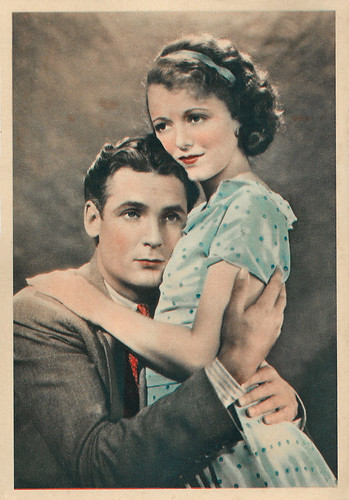
British postcard by Abdulla Cigarettes, no. 15. Photo: Fox.

German postcard by Ross Verlag, no. 4171/1, 1929-1930. Photo: Fox.
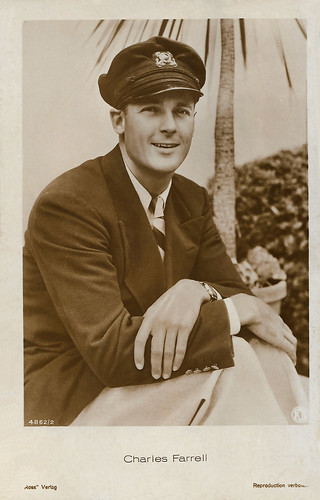
German postcard by Ross Verlag, no. 4862/2. Photo: Fox.
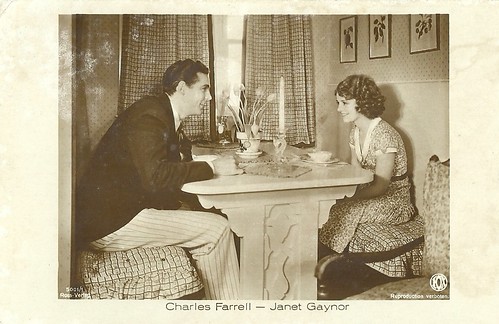
German postcard by Ross Verlag, no. 5001/1, 1930-1931. Photo: Fox. Janet Gaynor and Charles Farrell in the early sound film Sunnyside Up (David Butler, 1929).
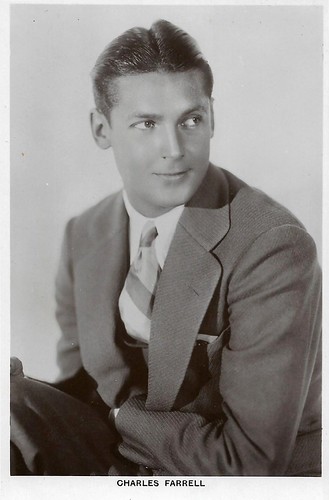
British postard in the Picturegoer series, London, no. 332.
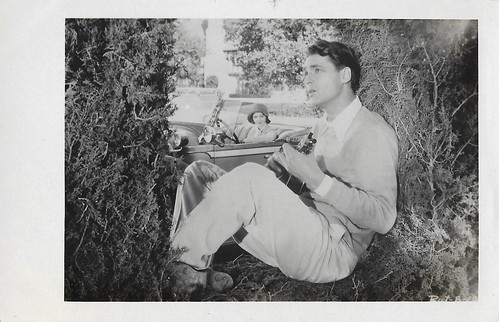
Photo postcard delivered by the Dutch East Indies. Toko Ang West, Bandoeng. Photo: publicity still for High Society Blues (David Butler, 1930).
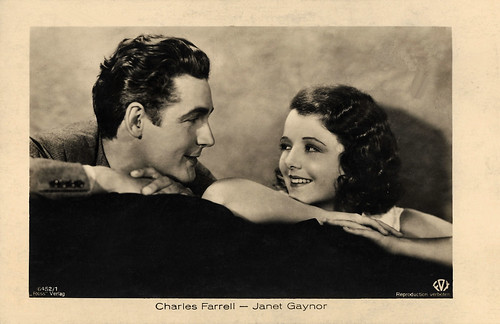
German postcard by Ross Verlag, no. 6452/1, 1931-1932. Photo: Fox. Publicity still for Delicious (David Butler, 1931) with Janet Gaynor.
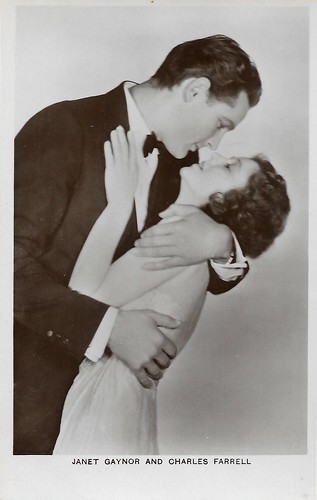
British postcard by Picturegoer, mo. 493. Charles Farrell and Janet Gaynor.
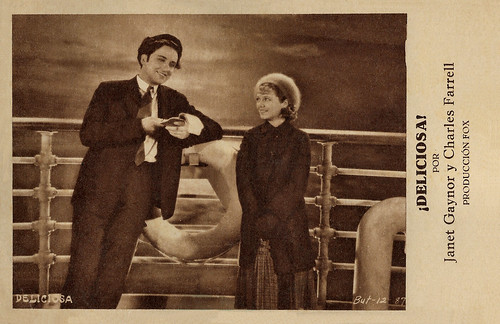
Spanish postcard by Editorial Gráfica, Barcelona, no. But-12 87. Photo: Fox. Charles Farrell and Janet Gaynor in Delicious (David Butler, 1931).
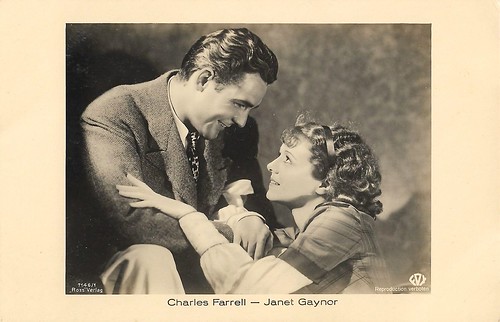
German postcard by Ross Verlag, no. 71466/1, 1932-1933. Photo: Fox. With Janet Gaynor.
Sources: Rachel (Vintage Stardust), Guy Bellinger (IMDb), Bill Takacs (IMDb), Wikipedia and IMDb.
No comments:
Post a Comment